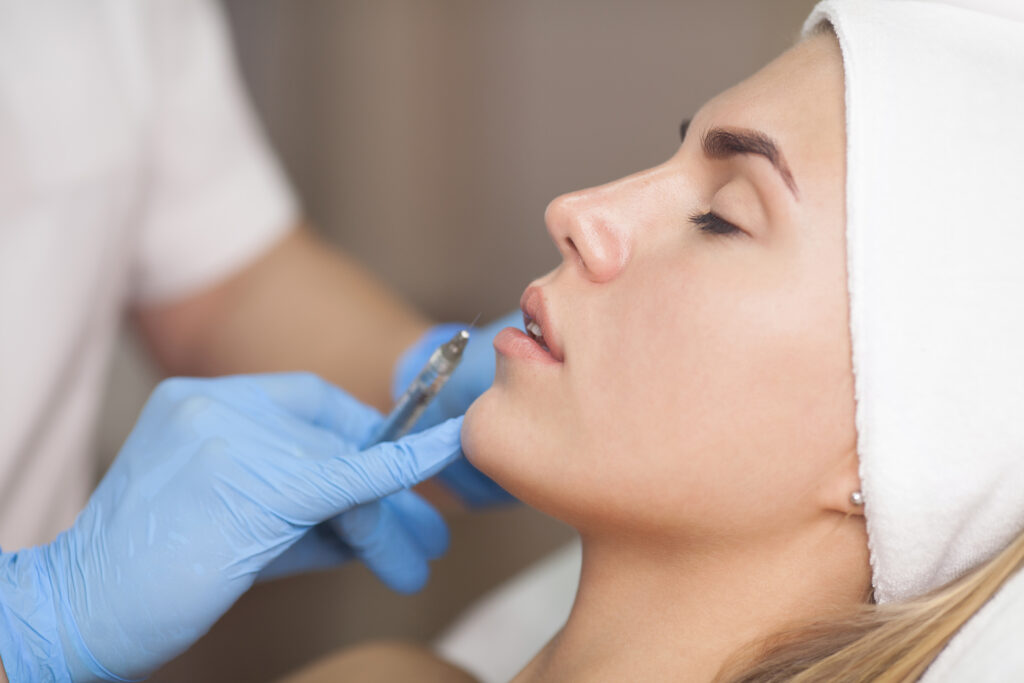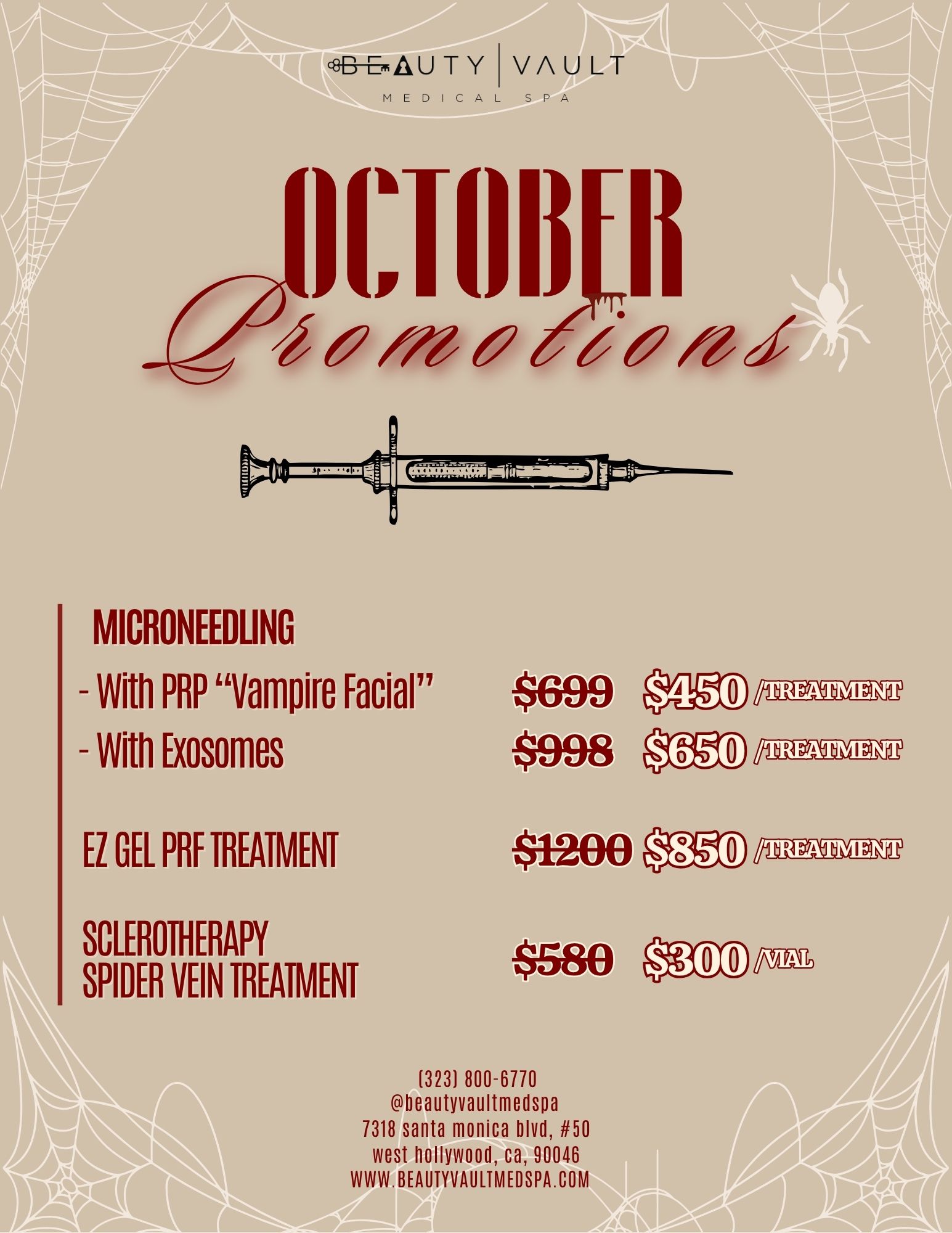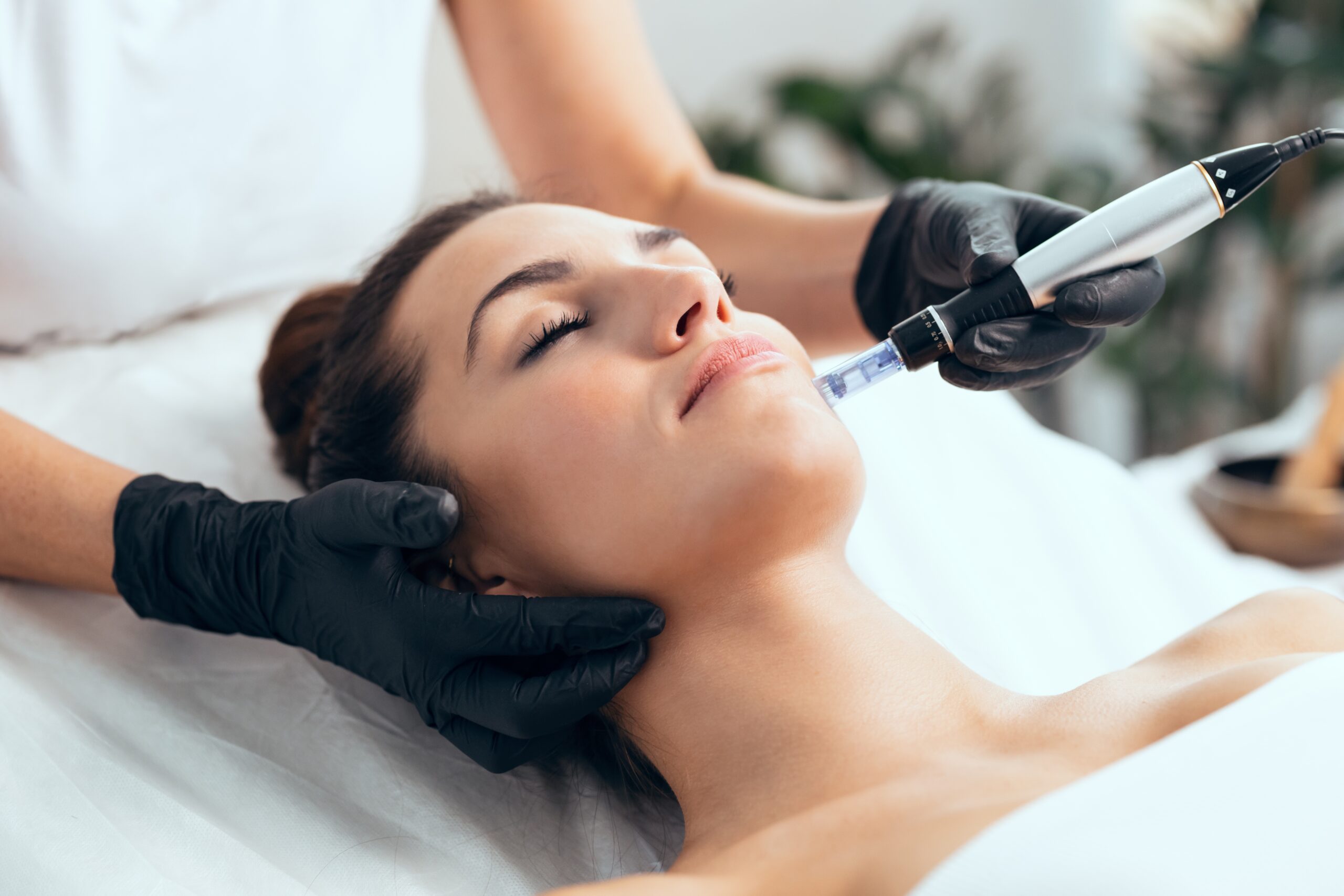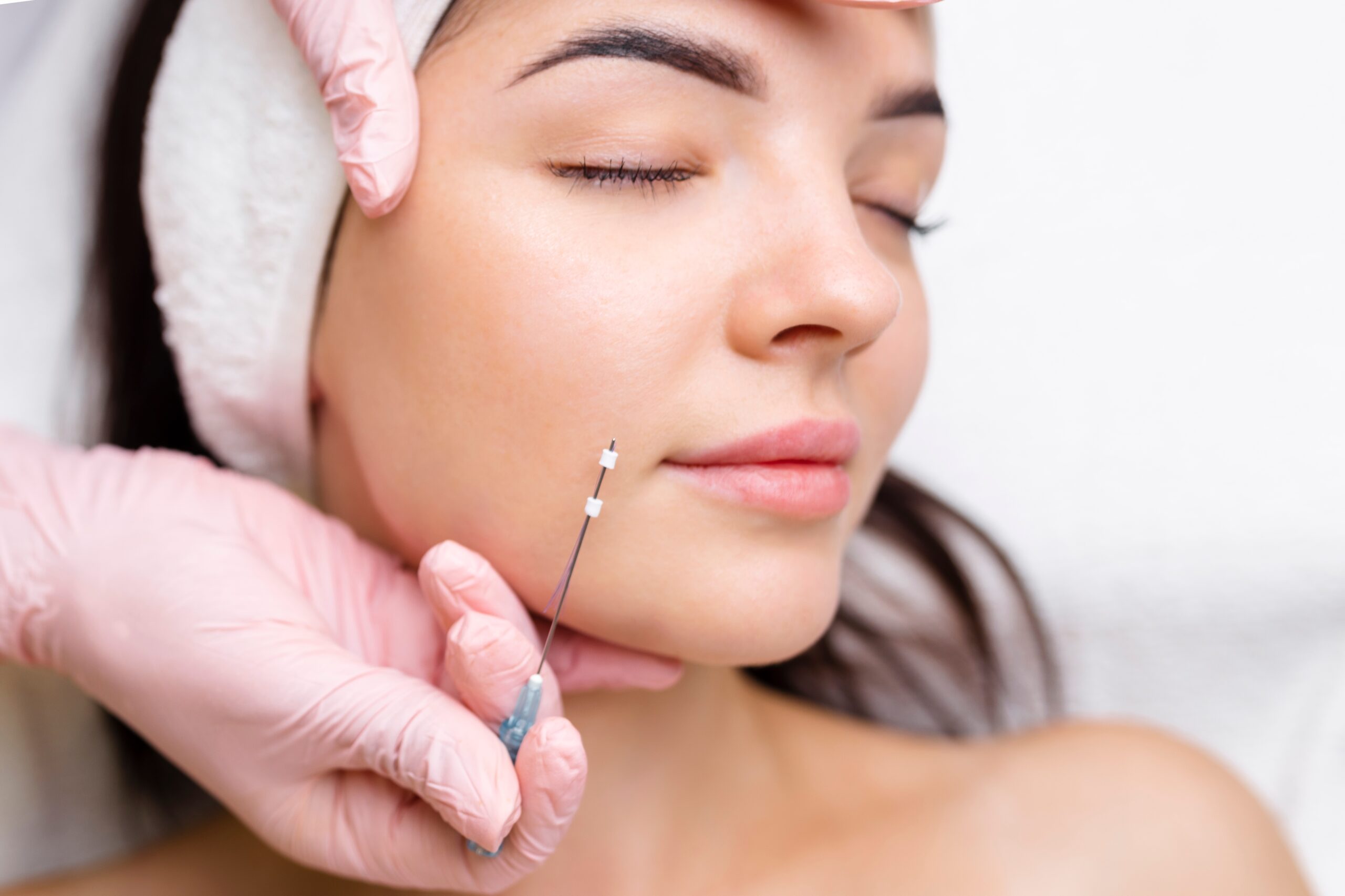Do Under-Eye Fillers Fix Dark Circles? What They Can (And Can’t) Do
Tear trough fillers rank among the most popular cosmetic procedures in the U.S. for dark circles under the eyes. They might appear to be a perfect fix, but you should know what these procedures can and cannot do so that you can make the most informed choices possible regarding your appearance. This piece explains how under-eye fillers work, what realistic results to expect, and what limitations to consider before deciding if this treatment suits your needs.
What Causes Dark Circles and Tear Troughs?
Dark circles and tear troughs affect many people, regardless of their age or lifestyle. You need to understand what causes these common problems to know why some treatments work better than others based on your specific case.
Loss of Volume and Fat Under the Eyes
The tear trough is a groove that runs from the inner corner of your eye toward your cheek. It naturally has fat pads that give support and fullness to your face. These fat pads start to shrink and move as you get older. This usually begins between your late thirties and early forties, though some people see changes earlier.
Age brings several structural changes around your eyes:
- Your body makes less collagen and elastin.
- Your skin gets thinner.
- You lose hyaluronic acid.
- Your facial bones and fat decrease.
The fat pads that once kept your skin smooth begin to weaken and dropdown. This creates a hollow or “sunken” look under your eyes. Then, what appears like dark circles might actually be shadows from this depression in the tear trough area.
Hyperpigmentation and Visible Blood Vessels
Volume loss isn’t always the cause of dark circles. Often, hyperpigmentation or visible blood vessels make the area under your eyes look darker.
The skin under your eyes is naturally thinner than the rest of your face. This makes blood vessels more visible and creates a bluish or purplish tint. As you age, your skin becomes more transparent, which makes this more noticeable.
Hyperpigmentation—when your skin produces too much melanin—can also cause dark circles. This happens because of:
- Sun damage (especially if you don’t wear sunglasses).
- Skin inflammation after allergies or dermatitis.
- Too much eye-rubbing.
- Lifestyle choices like smoking or using tanning beds.
People with darker skin are more likely to get under-eye hyperpigmentation. This happens because melanin-rich skin can have melanin drop into deeper layers, which creates visible dark spots.
Genetic Predisposition to Tear Trough Deformity
Some people have tear trough deformities from an early age because of their genes. In fact, genes affect several factors that contribute to tear troughs, such as:
- The thickness and resiliency of your skin.
- Your facial bone structure.
- How fat spreads around your eyes.
Some people have what doctors call a “negative vector orbit” or “flat” cheekbones. This gives less support to the lower eyelid and makes tear troughs more visible, even for those in their twenties.
Your genes also control how your body makes collagen and elastin in this delicate area. These proteins are vital for keeping skin elastic and preventing the hollow look that creates shadows.
This knowledge about different causes shows why tear trough fillers might work for some types of dark circles but not others. Dermal fillers can help with shadows from hollowing, but they won’t fix dark spots that aren’t related to volume loss.
How Under-Eye Fillers Work to Treat Tear Troughs
Under-eye fillers have become a popular non-surgical solution to treat tear troughs. These specialized injections can improve the appearance of hollow areas beneath the eyes and create a more refreshed look.
What is Tear Trough Filler and How Does It Add Volume
Tear trough filler is a gel-like dermal substance doctors inject into the under-eye area to create a smooth lift by replacing lost volume. The filler goes into and around the eye’s hollow to fill depressions that cause shadowing.
Your tear trough area starts at the eye’s inner corner and forms a half-circle underneath. Age often creates a groove or depression here because of volume loss in the midface, including facial fat depletion and reduction. Medical professionals inject the filler material into this groove, helping to restore the youth’s natural convexity, where the lower eyelid smoothly transitions to the cheek.
Hyaluronic Acid vs. Other Filler Types for Under Eyes
Hyaluronic acid (HA) fillers are a common choice for under-eye treatments for several reasons, including:
- Natural compatibility: Your body naturally produces HA to maintain skin hydration and plumpness.
- Safety profile: Doctors can dissolve HA fillers with an enzyme called hyaluronidase if needed, making them safer for this delicate area.
- Texture and appearance: These fillers look transparent and smooth. They provide the most natural look and rarely cause lumps or bumps.
What Under-Eye Fillers Can Realistically Fix
You need to understand what tear-trough fillers can do for your specific situation before choosing treatment options for under-eye concerns. These fillers provide real benefits for certain conditions, but they don’t work for all types of dark circles or under-eye issues.
Volume Loss and Hollowing Correction
Tear trough fillers’ biggest advantage lies in bringing back lost volume beneath the eyes. Your facial fat pads naturally decrease with age, which makes the tear trough area look hollow or sunken. Under-eye fillers effectively add lost volume to under-eye depressions, leveling the transition between the lower eyelid and cheek and creating a smooth, light-reflecting surface.
This treatment could greatly improve facial contours if you have deep tear troughs or lost volume in the mid-face. A skilled Beauty Vault practitioner can smooth out the transition between the lower eyelid and cheek by carefully injecting filler into the tear trough, which minimizes hollow appearances.
Mild to Moderate Dark Circles from Shadowing
People often think their dark circles come from skin discoloration when shadows actually cause them. However, using HA fillers to add volume to lost areas reduces the tear trough’s depth and removes the shadowy look that creates dark circles. This minimizes the tired, worn-out look that comes with under-eye darkness.
Fillers might also noticeably brighten the area for those whose dark circles mainly come from volume loss rather than pigmentation issues.
Improved Skin Texture and Hydration
Hyaluronic acid fillers boost skin while making structural improvements. Specifically, they attract and bind to water molecules naturally, which improves hydration from within. This improves the skin’s texture and brightness in treated areas. The fillers can also boost collagen production over time and improve skin structure.
What Under-Eye Fillers Can’t Fix
Tear trough fillers work great for adding volume, but you need to know their limits before getting treatment. They can get rid of shadows from hollowness under your eyes, but they won’t solve every under-eye problem.
Hyperpigmentation Not Caused by Volume Loss
Tear trough fillers add volume and reduce shadows, but they can’t fix true hyperpigmentation issues like:
- Melanin deposits from sun damage or genetics.
- Visible blood vessels showing through thin skin.
- Dark spots from allergies or chronic eye rubbing.
You might need other treatments for these pigmentation issues. Topical brightening agents, chemical peels, or laser therapy could work better. Adding filler to an area with real pigmentation issues might hide the problem for a while but won’t fix what’s causing it.
Excess Skin or Fat Under the Eyes
Your face changes with age, and your skin starts to sag while fat shifts around your eyes. Tear trough treatment can’t eliminate:
- Loose, sagging skin beneath the eyes.
- Puffy under-eye bags from protruding fat pads.
- Excessive hooding of the upper eyelids.
Adding volume with dermal fillers to eyes that already have extra tissue might make puffiness look worse. Surgical procedures like blepharoplasty could work better to remove extra skin and move fat around.
Very Thin or Crepey Skin in the Tear Trough Area
Your under-eye area’s skin gets thinner as you age. Under-eye fillers might not work well if you have:
- Very thin skin that shows the blue tint of the filler.
- Obvious texture issues or fine lines.
- Poor skin elasticity that could cause a bluish discoloration (known as the Tyndall effect).
Really thin skin might not hide the filler material well, and you could see bumps or a bluish tint after treatment. Putting filler under crepey skin usually doesn’t help the texture and might make wrinkles look worse.
Tear trough filler works best when you need to add volume in specific areas. The Beauty Vault team can help you decide if fillers or other treatments would work better for your under-eye concerns.
The Bottom Line on Under-Eye Fillers
Nothing adds a pep to your step like looking and feeling more youthful. Tear trough fillers can help you do just that by removing your dark under-eye circles. Schedule a consultation with the Beauty Vault team in West Hollywood to see whether you’re a good candidate. All you have to do is call them today at (323) 800-6770 or fill out a contact form.
FAQs
Q1. What are the potential drawbacks of under-eye fillers? Under-eye fillers can cause temporary side effects like bruising and swelling, which typically resolve within two weeks. In rare cases, more serious complications such as vascular occlusion or asymmetry may occur. The Tyndall effect, causing a bluish discoloration, is another possible side effect if the filler is placed incorrectly.
Q2. Can under-eye fillers completely eliminate dark circles? Under-eye fillers can significantly improve dark circles caused by volume loss and shadowing. However, they cannot address dark circles resulting from hyperpigmentation, visible blood vessels, or genetic factors. The effectiveness depends on the underlying cause of your dark circles.
Q3. How long do the results of under-eye fillers last? On average, under-eye filler results last about 9-12 months. However, some patients report seeing effects for up to several years in the under-eye area. The longevity of results can vary based on factors like the type of filler used, individual metabolism, and lifestyle habits.








